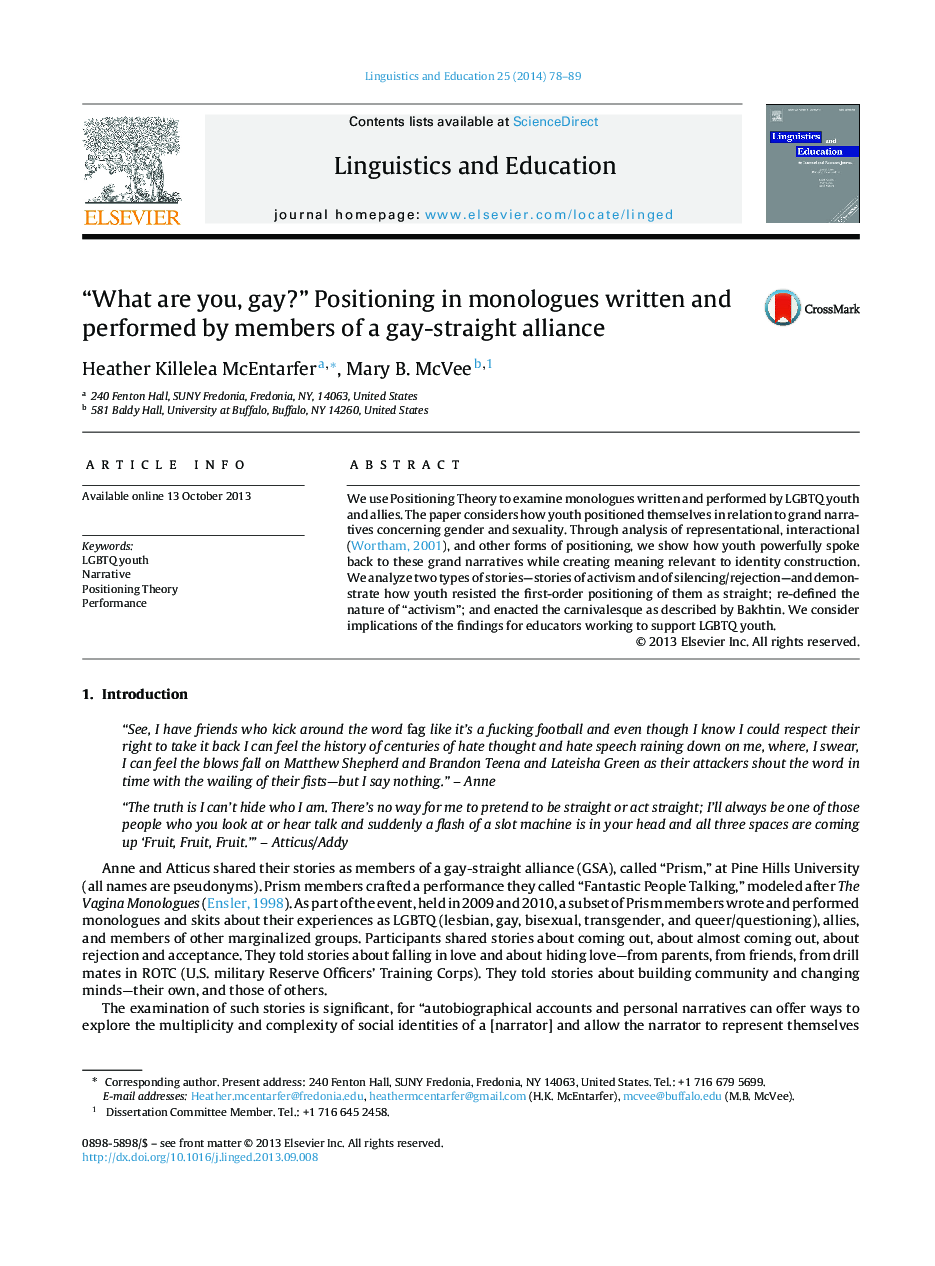| Article ID | Journal | Published Year | Pages | File Type |
|---|---|---|---|---|
| 366157 | Linguistics and Education | 2014 | 12 Pages |
•We analyzed monologues performed by members of a college gay-straight alliance.•We analyzed representational and interactional positioning.•Youth resisted heteronormative first-order positioning of themselves by others.•Youth took on varying representational subject positions—e.g., activist and victim.•Youth positioned themselves interactionally as activists.
We use Positioning Theory to examine monologues written and performed by LGBTQ youth and allies. The paper considers how youth positioned themselves in relation to grand narratives concerning gender and sexuality. Through analysis of representational, interactional (Wortham, 2001), and other forms of positioning, we show how youth powerfully spoke back to these grand narratives while creating meaning relevant to identity construction. We analyze two types of stories—stories of activism and of silencing/rejection—and demonstrate how youth resisted the first-order positioning of them as straight; re-defined the nature of “activism”; and enacted the carnivalesque as described by Bakhtin. We consider implications of the findings for educators working to support LGBTQ youth.
